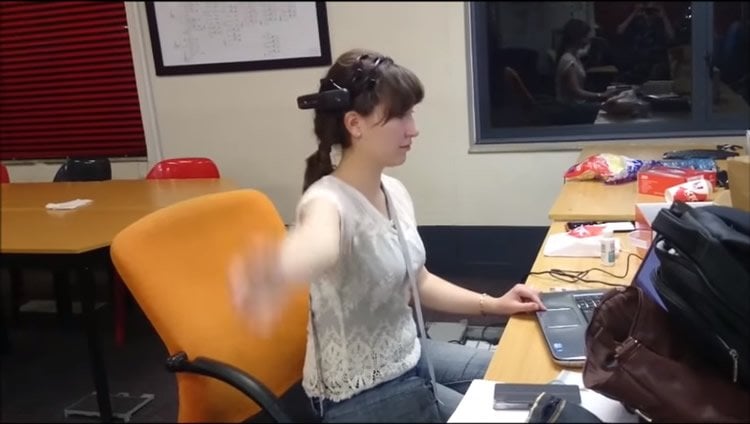Summary: A new project dubbed Brainternet can turn the brain into an Internet of Things node online.
Source: Wits.
Can you read my mind? In research thought to be a world first, biomedical engineers at Wits are connecting a human brain to the internet in real time.
The ‘Brainternet’ project streams brainwaves onto the internet. Essentially, it turns the brain into an Internet of Things (IoT) node on the World Wide Web. IoT refers to connecting any device with an on and off switch to the internet.
Brainternet is the brainchild of Adam Pantanowitz, a lecturer in the Wits School of Electrical and Information Engineering, who supervised fourth-years Jemma-Faye Chait and Danielle Winter in its development.
“Brainternet is a new frontier in brain-computer interface systems. There is a lack of easily understood data about how a human brain works and processes information. Brainternet seeks to simplify a person’s understanding of their own brain and the brains of others. It does this through continuous monitoring of brain activity as well as enabling some interactivity,” explains Pantanowitz.

Brainternet works by converting electroencephalogram (EEG) signals (brain waves) in an open source brain live stream. A person wears a powered, mobile, internet accessible Emotiv EEG device for an extended period. During this time, the Emotiv transmits the EEG signals to a Raspberry Pi – a credit card sized little computer – live streams the signals to an application programming interface (code that allows software programmes to communicate), and displays data on a website that acts as a portal. This is currently an open website where the public can observe the individual’s brain activity.
“Ultimately, we’re aiming to enable interactivity between the user and their brain so that the user can provide a stimulus and see the response. Brainternet can be further improved to classify recordings through a smart phone app that will provide data for a machine-learning algorithm. In future, there could be information transferred in both directions – inputs and outputs to the brain,” says Pantanowitz.
Source: Wits
Image Source: NeuroscienceNews.com image is adapted from the video. Credit Danielle Winter.
Video Source: Video credited to Danielle Winter.
[cbtabs][cbtab title=”MLA”]Wits “Connecting a Human Brain to the Internet in Real Time.” NeuroscienceNews. NeuroscienceNews, 14 September 2017.
<https://neurosciencenews.com/brain-internet-connection-7489/>.[/cbtab][cbtab title=”APA”]Wits (2017, September 14). Connecting a Human Brain to the Internet in Real Time. NeuroscienceNew. Retrieved September 14, 2017 from https://neurosciencenews.com/brain-internet-connection-7489/[/cbtab][cbtab title=”Chicago”]Wits “Connecting a Human Brain to the Internet in Real Time.” https://neurosciencenews.com/brain-internet-connection-7489/ (accessed September 14, 2017).[/cbtab][/cbtabs]







